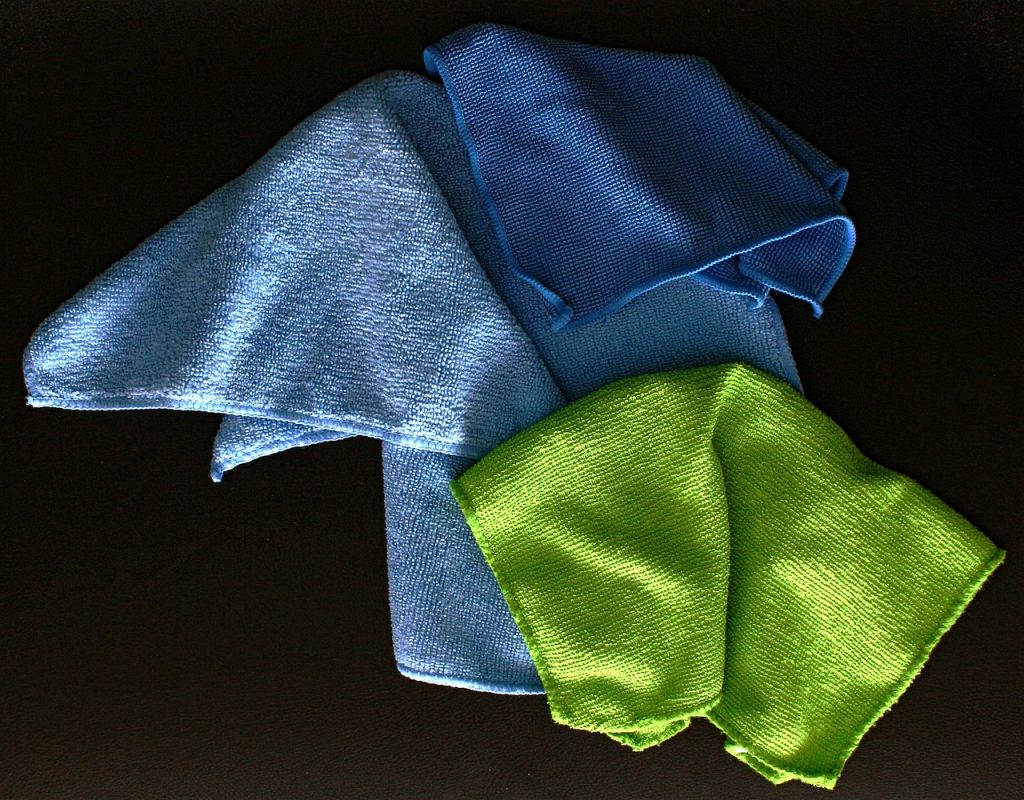In recent years, microfiber cloths have revolutionized household cleaning. These versatile, durable, and efficient cleaning tools offer a multitude of benefits, not only for your wallet but also for the environment. In this blog, we will delve into what microfibers are, how they work, and why incorporating them into your household chores can be a game-changer for both your finances and the planet.
What Are Microfibers?
Microfibers are extremely fine synthetic fibers, typically made from a blend of polyester and polyamide (nylon). These fibers are split to create microscopic hooks that can pick up and trap dirt, dust, and moisture more effectively than traditional cleaning materials. The unique structure of microfiber cloths makes them highly absorbent and capable of capturing particles as small as bacteria, making them an excellent choice for thorough cleaning.
Benefits of Using Microfibers
- Cost Savings
Durability: Microfiber cloths are incredibly durable and can withstand hundreds of washes. Unlike disposable cleaning wipes or paper towels, which need frequent replacement, microfiber cloths have a long lifespan, saving you money over time.
Reduced Need for Cleaning Products: Microfibers are effective at cleaning with just water, reducing the need for expensive cleaning solutions. This can significantly cut down your household expenses on cleaning products.
Less Wear and Tear: Using microfibers can prolong the life of your surfaces and appliances. Since they clean more gently yet effectively, there’s less wear and tear compared to harsher cleaning methods. - Environmental Benefits
Reduction in Waste: By replacing disposable wipes and paper towels with reusable microfiber cloths, you can significantly reduce household waste. This minimizes the amount of trash that ends up in landfills.
Lower Chemical Use: Microfibers clean effectively with just water or minimal cleaning agents, reducing the need for chemical cleaners. This decreases the release of harmful chemicals into the environment, promoting a healthier ecosystem.
Energy Efficiency: Microfiber cloths require less water for cleaning and rinsing compared to traditional cloths. Additionally, they dry quickly, reducing energy consumption if you machine dry them.
How Microfibers Work
Microfiber cloths work through a combination of their fine fibers and the structure created by splitting these fibers. The cloths create a large surface area that can hold dust, dirt, and liquid. The positively charged fibers attract negatively charged dust particles, making them highly effective at picking up even the smallest particles.
Practical Tips for Using Microfibers in Household Chores
General Cleaning:
Use microfiber cloths to dust surfaces like shelves, countertops, and furniture. Their static charge attracts dust and prevents it from resettling.
For mirrors and windows, dampen a microfiber cloth with water and wipe clean. Follow with a dry cloth for a streak-free finish.
Kitchen Use:
Microfibers are excellent for wiping down kitchen counters, stovetops, and appliances. Their absorbency makes quick work of spills and splatters.
Use them to clean stainless steel appliances for a shiny, streak-free finish.
Bathroom Cleaning:
Tackle soap scum and grime on bathroom tiles and fixtures with a damp microfiber cloth. They effectively scrub without scratching surfaces.
Use a dry microfiber cloth to polish faucets and mirrors for a gleaming result.
Floor Cleaning:
Attach a microfiber cloth to a mop for effective floor cleaning. The cloths are great for both dry dusting and wet mopping, making them versatile for all types of flooring.
Caring for Your Microfiber Cloths
To ensure the longevity and effectiveness of your microfiber cloths, proper care is essential:
Washing: Wash microfiber cloths separately from other laundry to avoid lint transfer. Use a gentle detergent and avoid fabric softeners, as they can clog the fibers.
Drying: Air drying is best, but if you use a dryer, choose a low heat setting to prevent damage to the fibers.
Storage: Store clean, dry microfiber cloths in a dust-free environment to keep them ready for use.
Conclusion
Microfiber cloths are a small investment that offers substantial returns in terms of cost savings and environmental benefits. Their durability, effectiveness, and versatility make them an excellent addition to any household cleaning routine. By switching to microfibers, you can reduce waste, cut down on the use of chemical cleaners, and save money, all while maintaining a cleaner and healthier home. Embrace the power of microfibers and contribute to a more sustainable future, one clean surface at a time.

